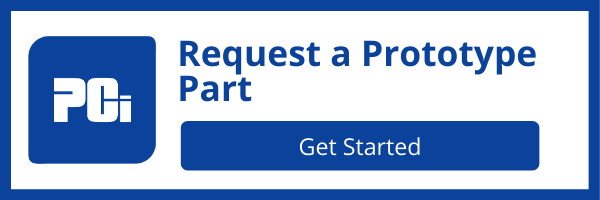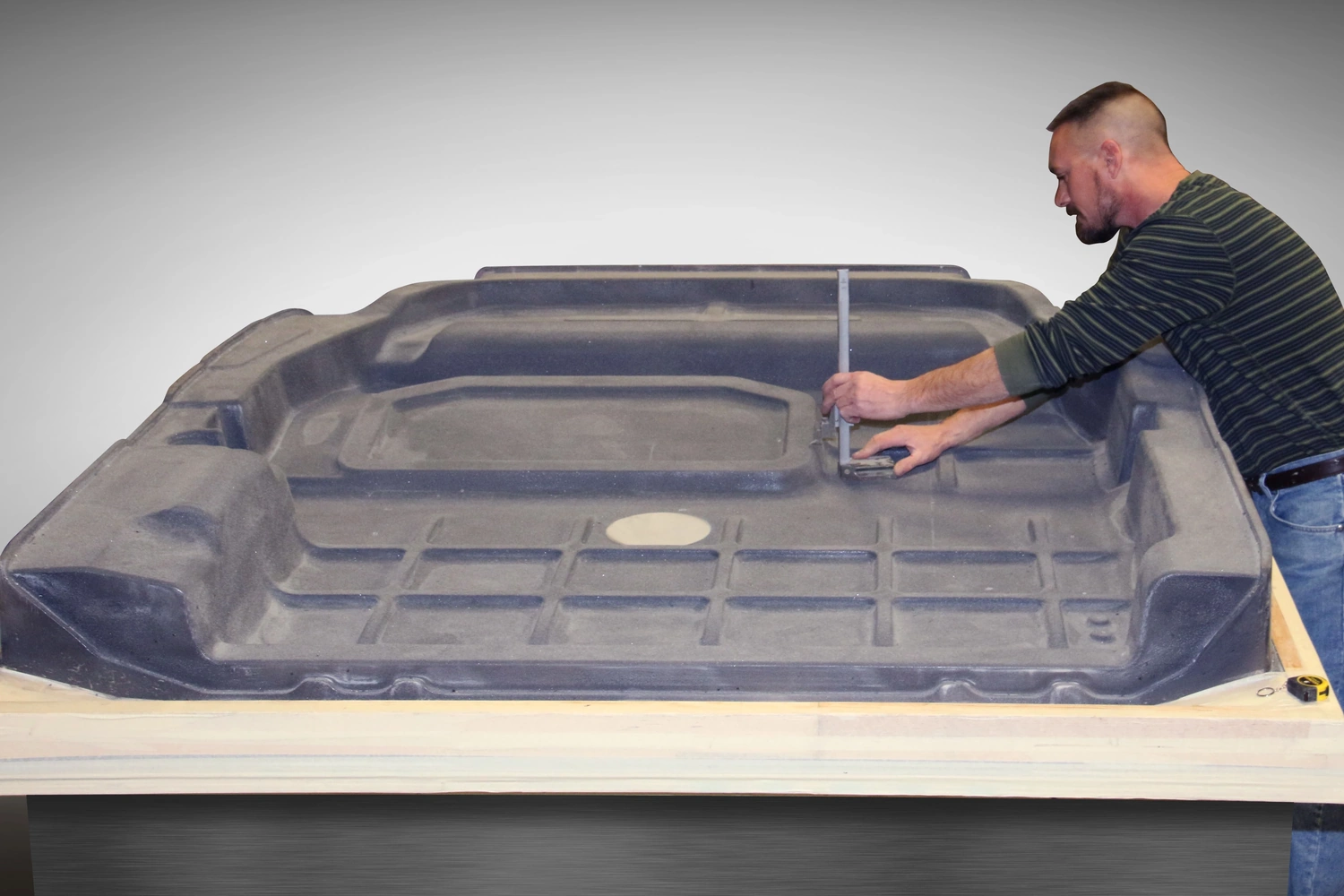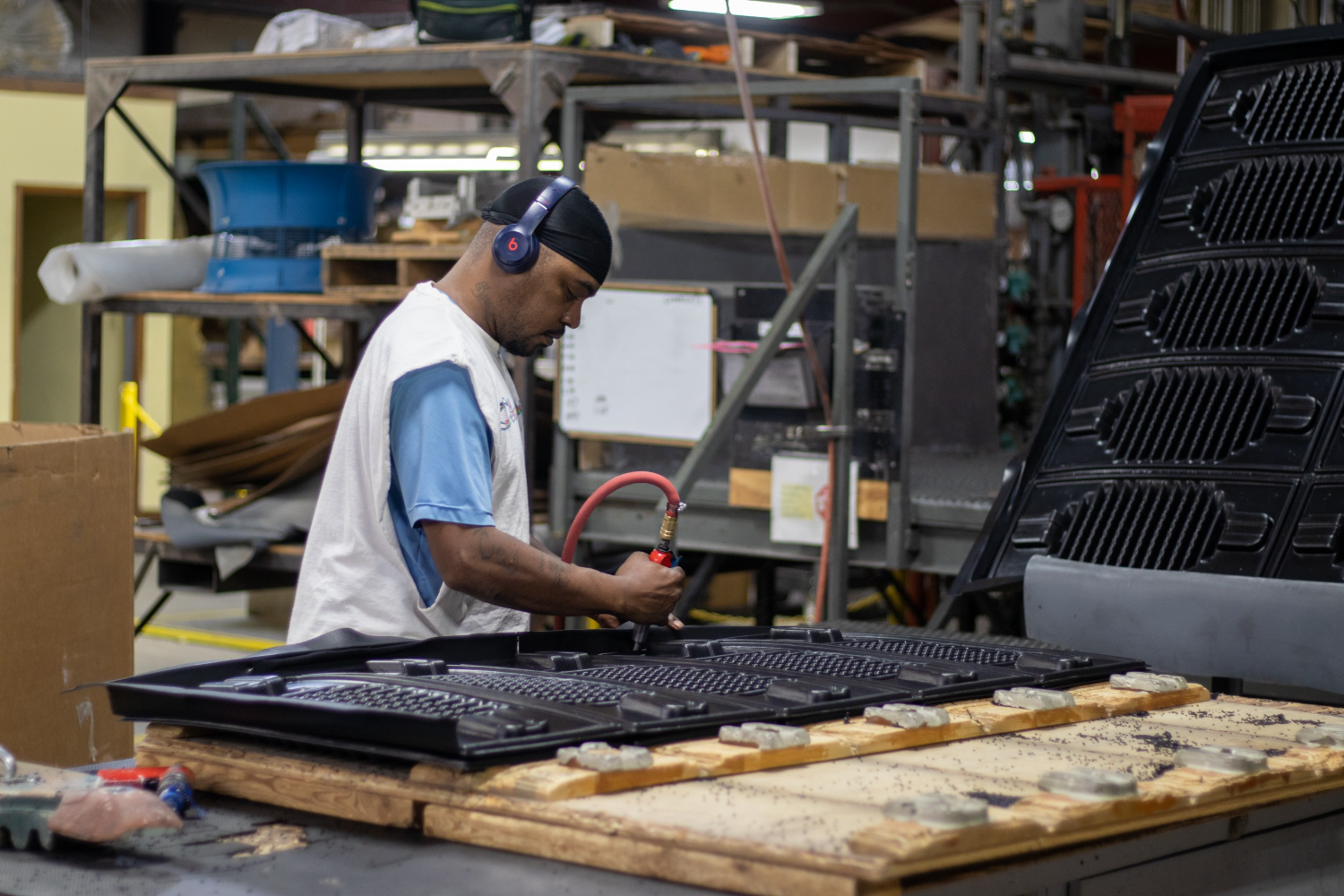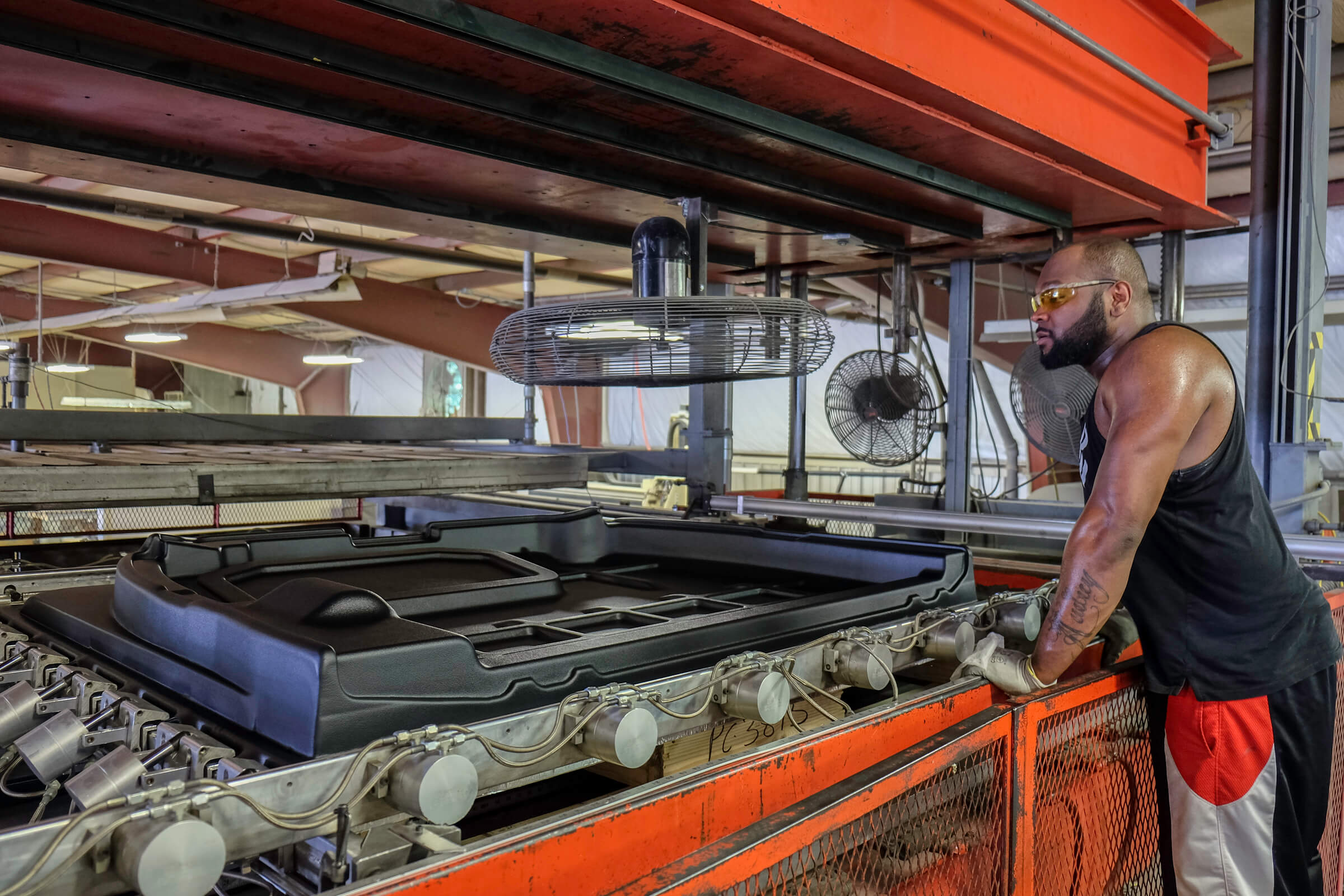One of the most important advantages of the thermoforming process is the ability to make low-cost tooling leading to shorter lead times.
Where thermoforming tooling fits in the overall process
The thermoforming process can be broken up into four main steps:
1. Heating the material.
2. Forming the material. The heated flat plastic sheet material is molded into the desired shape using vacuum forming. Once the material is heated to moldable temperature, the material is stretched over a male mold or laid into a female, and then a vacuum is used to remove the air between the material and the mold. The removal of the air forces the material to conform to the shape of the mold.
3. Cooling the formed part.
4. Trimming the formed part.
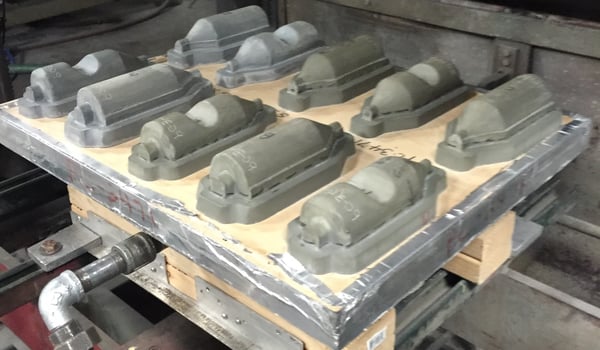
Types of tooling available
All thermoforming tool consists of a positive tool that is convex-shaped and a negative tool that is concave-shaped. After heating the plastic sheet it is placed above the positive tool which will impart the exterior surface shape to the part. The negative tool gives the parts their outer surface shape.
Once formed, the plastic is cooled by using air or liquid cooling systems.
The material used to make the tool makes a big difference in the time to cool the part as well as affecting the final quality of the part.
A variety of tooling options are available depending on part design, specified sheet, and volume requirements.
We build thermoforming tooling using the following materials:
- Wood patterns
- 3D print
- Composite
- Ceramic
- Cast Aluminum
- Temperature Controlled Cast Aluminum
Using the above materials to make tools yields prototype part volumes ranging from 1 - 10 prototypes for wood patterns to multiple thousands using aluminum or temperature-controlled tooling.
Wood, composite, and 3D printed tools will produce prototype parts made from ABS, PVC, and blends. Ceramic and aluminum tooling can make production parts for most all thermoformable materials
Wood, composite, and 3D printed tools require 1-4 weeks lead time to build depending on the design complexity.
Ceramic and aluminum tooling require an 8-12 weeks lead time to build depending on the part size, shape, and detail.
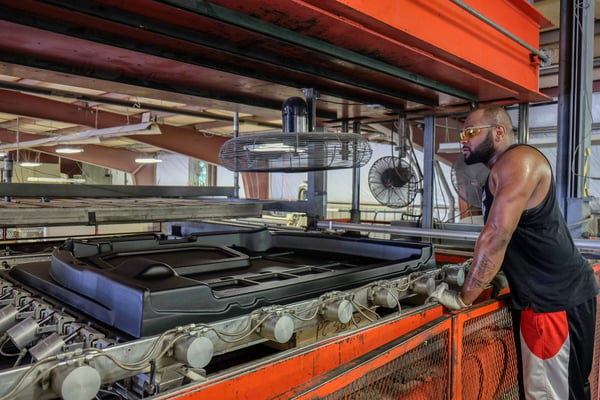
Benefits of Thermoforming Tooling
Here is an example of the process of building thermoforming tooling and how it delivered the desired results for one of our customers.
"To start, PCI evaluated the 3D solid model design, machined tooling, and supplied initial samples for the level 3 PPAP.
A huge reason we chose PCI is that they machine various types of patterns, production tools, and production fixtures in-house. We know from hard-earned experience that molding houses that outsource their tooling design and production often have longer lead times and struggle to react quickly when something needs to be changed. And we all know that something always needs to be changed.
PCI is able to modify tools used in thermoforming quickly by either milling out an area to add a pocket or even adding material to a section to bring the tools into the desired state for the production run.
By turning around tooling fast, coupled with the inherent reduced cost of thermoforming tools, PCI saved us a ton of money when compared to sheet metal stamping tools.
We launched our commercial wall panel project quickly and needed to get the first prototypes fast. PCI was able to get us the first round of prototype parts within 5 weeks. We even brought our test vehicle to their location to test the quality of those initial prototypes and to make any adjustments.
PCI and their team were very helpful in reducing the time it took to get from the first article prototype to the production stage. They really know how to make adjustments quickly with a minimum of iterations.”
Outcomes:
- Significantly faster tool lead times to meet the schedule to get prototypes and first-run production parts to bring this product to market quickly.
- Significantly lower tool cost/capital investment - Decreased tooling costs by tens of thousands of dollars compared to other molding methods and metal stamping.
About PCI
Since 1972, Plastic Components, Inc. has been in the business of supplying heavy-duty and large thermoformed plastic parts to various industries and companies, including special vehicle, general industrial, mass transportation, telecom, agricultural, and truck/bus industries. We understand the value of time and money, so we design, assist in the design, engineer, and build tooling in-house.
Our in-house tool design, patterns, and castings capabilities allow us to build tools designed to meet your quantity, quality, and budget requirements.
Our knowledgeable and well-trained team works with you to ensure the end product meets or exceeds your specifications, regardless of the order size. Choosing PCI for your plastic needs will help you maximize the potential of your business.
